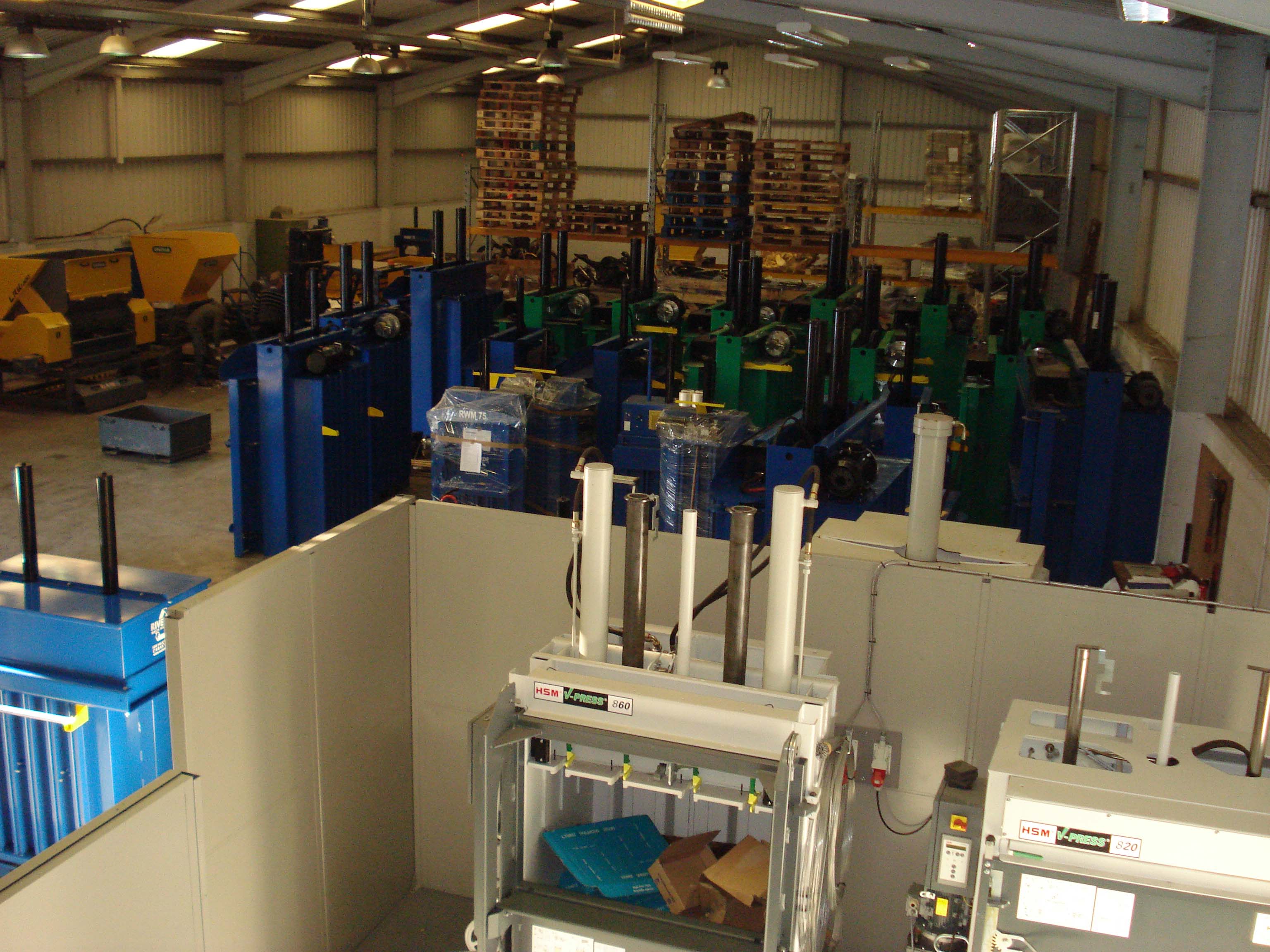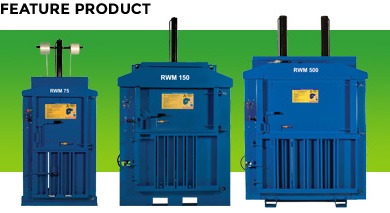Balers are often considered simplistic pieces of waste handling kit that purely handle straightforward recyclables such as cardboard or plastic film. But baling equipment is mightier than you think, explained our MD Jonathan Oldfield in a recent feature for Recycling & Waste World magazine. If you missed the article you can read it in full here…
As the recycling and resource industry has continued to evolve, the ‘humble’ baler has – perhaps understandably – forgone its share of the limelight. Something of a reliable workhorse, it has carried on doing what it always does, whilst revolutionary new feats of engineering have changed the way we handle the materials that many people would otherwise consider ‘rubbish’.
At least, that’s what seems to have happened, at first glance.
Perhaps this is because balers are renowned for their efficient processing of cardboard, one of the most valuable yet commonplace commodities in the modern ‘waste’ environment. So many organisations handle cardboard on a daily basis, it can be transformed into a vast array of other products in its next ‘life’ and it is relatively easy to recycle.
But that doesn’t mean cardboard baling is all that this technology can – or should – do.
Whilst shredders, trommels and NIR optical sorters may have dominated the environmental industry headlines, balers have been hard at work in the background handling many more unusual, complex materials.
Family-run footware component manufacturer E A Tailby Ltd, for example, uses a baler to handle leather. Established in 1902, this fourth-generation business makes soles and heels out of primarily thick, cow hide leather, which are then supplied to a vast proportion of the high-end English footwear trade.
Due to the nature of this Kettering-based organisation’s manufacturing process, approximately 20% of all leather purchased is left over as offcuts or scrap. To prevent this material going to landfill, E A Tailby has therefore used an on-site baler for over 20 years.
Only recently, the company has upgraded to an RWM450 heavy duty waste baler to cope with the increased volume of materials being produced – scrap leather was easily filling a skip each week. The RWM450 now offers greater capacity, the ability to comfortably produce four bales in excess of 400kg each week, and the robustness to handle the tough 4-6mm leather.
Once neatly baled, the leather is shipped to Germany, where it is recycled and turned into regenerated leather. This is achieved by mixing the leather with paper pulp and latex to form a ‘gooey’ mixture which is, in essence, blended leather. The mixture can then be passed through rollers and turned into sheet form before being dyed and transformed into products such as diary covers.
Although no profit is made on the sale of the ‘scrap’, funds are saved as the baler negates the need for a skip and the yield from the balers covers the carriage costs to Germany. The site is also tidier, landfill diversion is achieved and a circular business model has been adopted through the ongoing utilisation of the leather.
A smaller heavy duty waste baler is achieving similar progress for the world’s leading nuclear research organisation National Nuclear Laboratory (NNL). Keen to improve the efficiencies of its hazardous waste management system, NNL procured an RWM60HD for use at the Sellafield site.
The NNL team was already salvaging used plastic containers which had previously housed non-active hazardous waste, before packaging around 25 of them into IBC drums and sending them away for specialist treatment and recycling. But this progressive company was keen to do more and knew that compressing and baling the plastic containers would achieve even greater efficiencies.
Marketplace research therefore began and a comprehensive waste audit led NNL to invest in the RWM60HD – a strong and sturdy machine built to handle even the most difficult of recyclables. Designed with operator safety in mind and fitted with an emergency stop button, this type of technology could easily pass NNL’s PUWER (Provision and Use of Work Equipment Regulations 1998) assessment. A stainless steel bund was also manufactured to sit under the baler to collect any excess residue discharged during the baling process.
With its high press force, a baler such as this can achieve a 3:1 compaction ratio, enabling NNL to now fit at least 75 plastic containers into each IBC drum. The waste contractor is paid according to the volume of ‘waste’ collected not the weight, which recoups a 66% cost saving for NNL whilst maximising vehicle loads and therefore reducing the carbon footprint of the process.
Similar compaction success can be achieved using drum press technology – a ‘sister’ solution to a standard vertical baler. Specialist rubber compound manufacturer Momentive Performance Materials opted for this type of machine to crush 18 plastic drums and pails into one, saving the company €510 per recycling collection.
But it isn’t just plastic drums and cartons that can be compressed in such a manner. At Serco managed HMP Kilmarnock, for example, inmates hand-segregate the prison’s waste in a dedicated recycling work shed. More straightforward cardboard packaging materials are baled in a mid-range machine (RWM200 twin) whilst the tougher recyclables are processed by what has already proven to be a small and mighty piece of kit (the RWM60HD).
Capable of handling HDPE cartons, aluminium drinks cans and commercial steel catering cans, this baler creates neat single-stream bales of up to 25kg. In one month alone the prison can now collect 4,380kg of cardboard and paper, 2,364kg of aluminium and steel, and 788kg of plastic.
Since the balers were installed just over two years ago, landfill diversion savings have exceeded £12,000 and, once the quality and consistency of the recyclates was proven, Serco at HMP Kilmarnock was able to start selling the baled materials for recycling. In the same period the revenue yield has topped £4100, whereas previously this organisation paid for its ‘waste’ to be taken away.
Now that the process is fully embedded within the prison, and education attempts are continuing, Serco’s goal is to accelerate this segregation, baling and recycling process. Progress has been achieved to the extent that only 21% of the prison’s entire waste now goes to landfill. The aim is to halve that figure again within the next 12 months and, longer-term, become an entirely zero waste to landfill site.
Sometimes ‘off the shelf’ baling technology can tackle such complex materials. In other instances, modifications are required to withstand the pressures of the application. At HMP Kilmarnock, for example, an adapted steel handle was all that was needed to cope with the heavy duty handling scenario.
At Pirelli on the other hand, the RW60HD had to be extensively modified to meet the extremity of the recycling challenge. This renowned tyre manufacturer utilises this baling technology to compress uncured tyre production ‘offcuts’. Whilst these rubber strips are not heavy, they are awkward to handle. However, if they remain uncontaminated, they can be recovered and put back into the manufacturing process to achieve a closed loop model. The interior chamber of the baler therefore had to be pure stainless steel with no painted surface and no chance of rust. But, as a result, it has helped increase production rates.
Pirelli is an organisation that understands the true flexibility and scope of baling technology. That’s why curing bladders (complex rubber components utilised in the tyre moulding process), first-stage covers, trimmings from the automated tyre pressing system and other rubber compounds are also all baled. They are admittedly difficult to handle, but with a large machine aperture and a hard-wearing baler chamber, such materials can be efficiently processed – in a larger RWM550HD machine – for specialist offsite recycling. And an RWM400 takes care of polypropylene bulk bags. Because 25 tonnes of material are now salvaged every week, across two sites, the machines paid for themselves in a matter of months.
In all of the scenarios described, the baler doesn’t transform the physical properties of the material, as a shredder would, for example. But the size reduction technique does facilitate easy, efficient handling and, in most instances, transport, which heightens both the commercial and environmental argument for reuse or recycling. Without this technology in place, the processes would otherwise be costly, time consuming or resource-excessive.
It just goes to show that there’s more to balers, than simply handling cardboard. Even the smallest machines can actually be very mighty indeed.










